Climate change: Wales' ports need upgrade for bigger wind farms
- Published
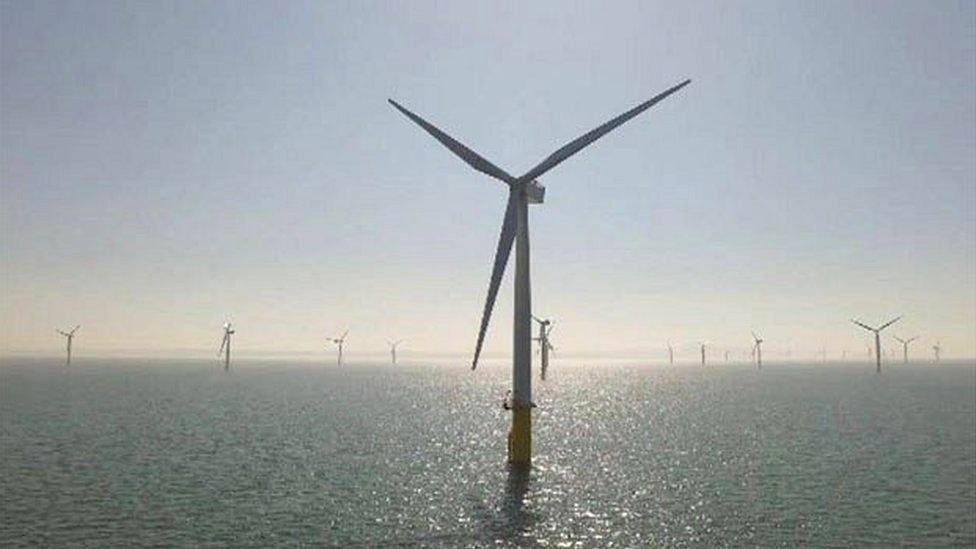
The proposed Awel y Môr wind farm would be next to the existing Gwynt y Môr site
There are fears Wales could lose out on jobs and investment from offshore wind because ports are not well equipped enough.
Wind farms being developed now have much bigger and heavier turbines, needing quays that can carry ten times the weight they do now.
Hundreds of jobs could be created by expansion, one port manager said.
The Welsh government said it was working with four operators to understand the specific requirements.
Wales is particularly well placed to benefit from this evolving technology because of its strong winds and and long coastline.
There are several wind farms off the north Wales coast, with more being planned.
Jim O'Toole, managing director of Port of Mostyn, in Flintshire, said these opportunities could be threatened because no port in north Wales was well enough equipped to handle the larger turbines being planned now.
His port has already built seven wind farms, the last being Gwynt y Môr, run by RWE, which has 160 turbines that are 150m (492ft) tall to the blade tip.
The company's next project off north Wales, Awel y Môr, involves turbines that are 332m (1,090ft) high, and much heavier.
The massive turbines will be taken out to sea by boat and the quay, which the boats tie up to, will need to be able to cope with weights of 3,000 tonnes, compared with 300 tonnes now.
"The existing quays are no longer capable of doing those lifts, so we need to build a whole new quay capable of lifting 3,000 tonnes," he said.
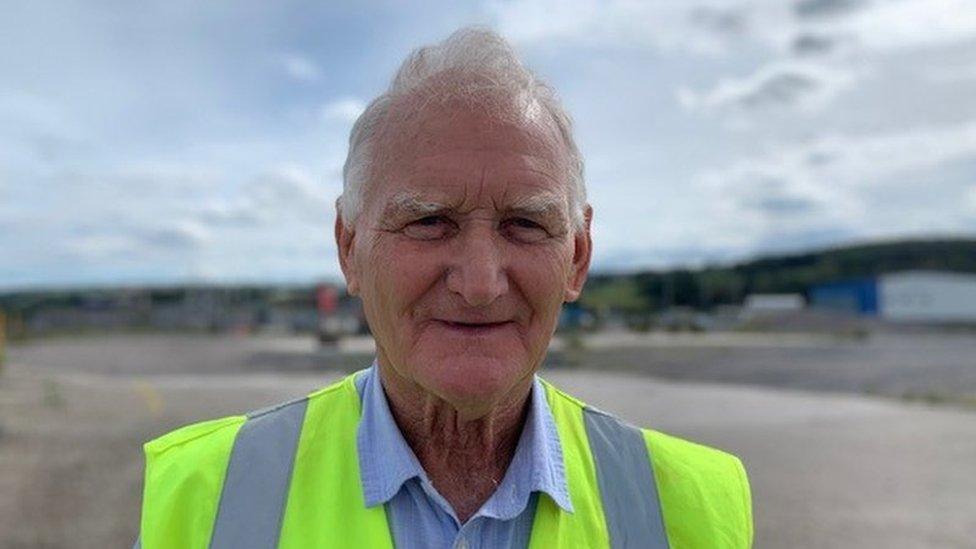
Managing director of the port of Mostyn said a whole new quay would need to be built at the port to cope with the new turbines
The Welsh government acknowledged investment was needed and said it was working with those companies running the ports to understand what each needed.
Mr O'Toole said the port needed to open an extension by 2025 to help build the new wind farm Awel y Môr, which will be big enough to power 500,000 homes.
"We can't afford to lose that as the project is expected to create many new skilled, well paid jobs."
When Gwynt y Môr windfarm was built by the port for RWE in 2015, 450 people were employed for two years, and 140 people were kept on to maintain the wind farm for the next 30 to 35 years.
Tamsyn Rowe, from RWE, said: "We need to act quickly and we need more projects like Awel y Môr to decarbonise society and protect it for future generations."
The taller turbines will enable the curved blades to reach into higher level winds which are stronger and more consistent.
"They can generate for longer and these factors drive down the cost of energy.
"Climate change is real, it's happening and we need to act urgently," said Ms Rowe.
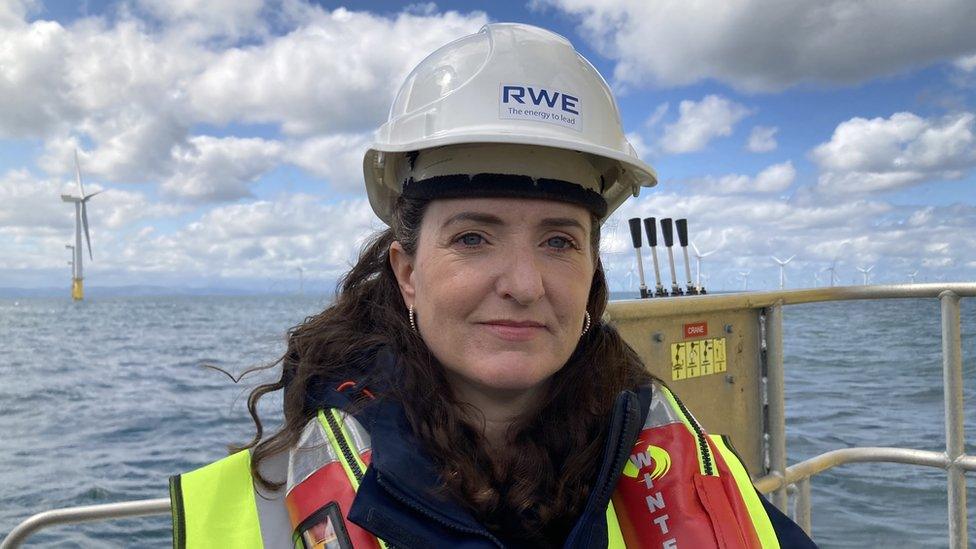
Tamsin Rowe, from RWE said taller turbines can reach higher level winds which are stronger
Economy Minister Vaughan Gething said Gwynt y Môr had proved its value.
"I want to maximise the return and economic benefits that we see from these developments," he said.
"If you want to generate cleaner, greener power, you have to take practical steps to do so."
The wind farms already along the north Wales coast have been important customers to local businesses, such as Workplace-Worksafe in Ruthin, Denbighshire.
They started supplying RWE with work uniforms and protective clothing, before owner Rhian Parry said she saw a way in which her company could save firms like RWE large amounts of money.
The windfarm industry had been lifting expensive technical equipment into the turbines in cardboard boxes, and they were often getting smacked against the turbine masks by the winds, and made wet by the sea.
Ms Parry, and her team of 12 employees designed, and now make, reusable, protective handling bags, not just for RWE, but for the industry worldwide.
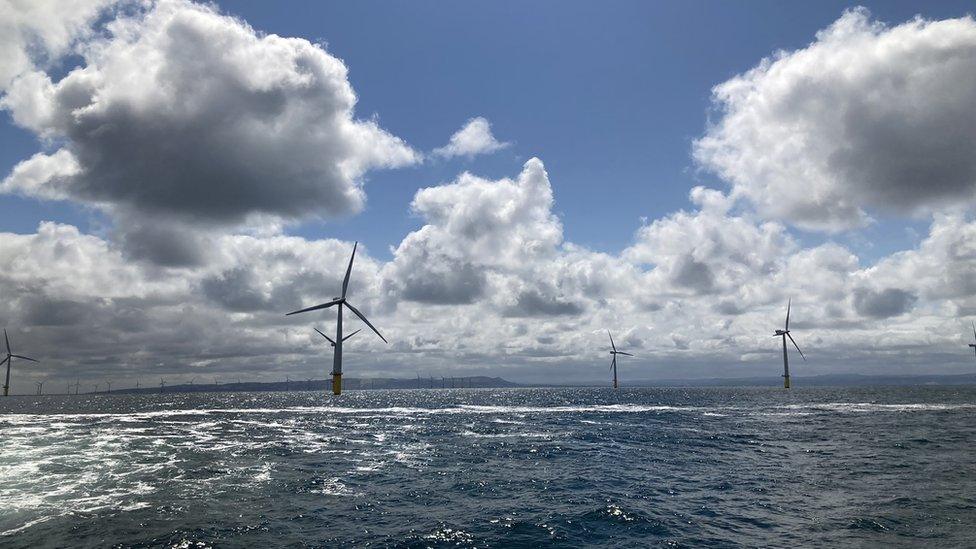
Newer wind farms being developed have much bigger and heavier turbines, which ports in north Wales are not well equipped to support
"It's saved the customer £24m a year," she said.
She said she believed there were big opportunities for small businesses.
"You have to be agile, and be wanting to work with them.
"I love working with the wind farm sector, because it doesn't matter if you are a lady, your sexuality, anything like that, it's open arms, and they genuinely want to know," she added.

WONDERS OF THE CELTIC DEEP: Encounter mythical coasts and extraordinary creatures
IOLO: A WILD LIFE: Iolo delves into the archives from the past 25 years

- Published5 July 2022
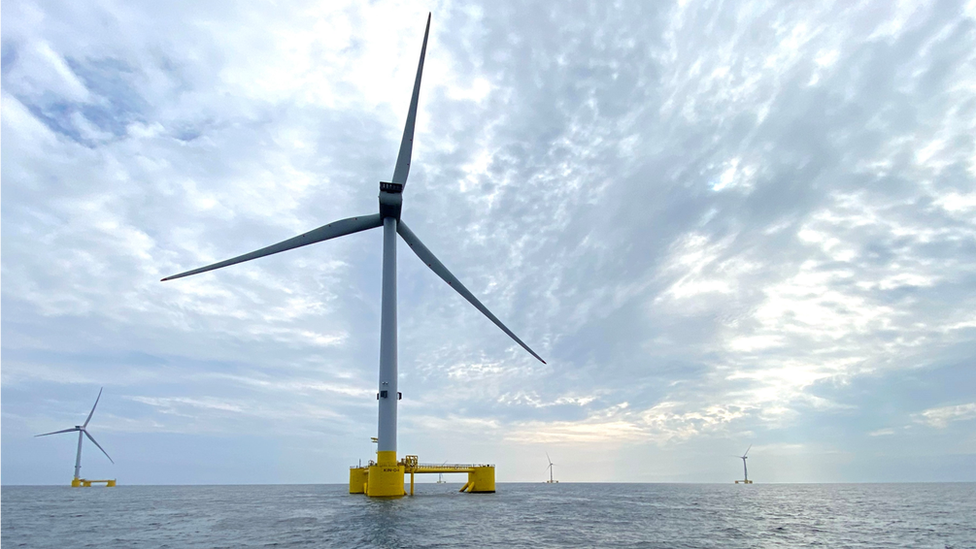
- Published20 December 2021
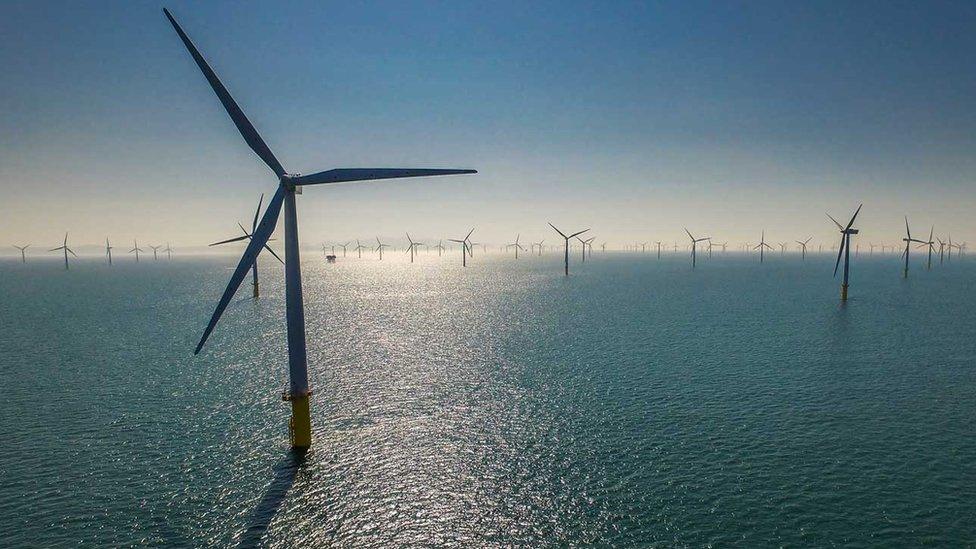
- Published4 September 2021
